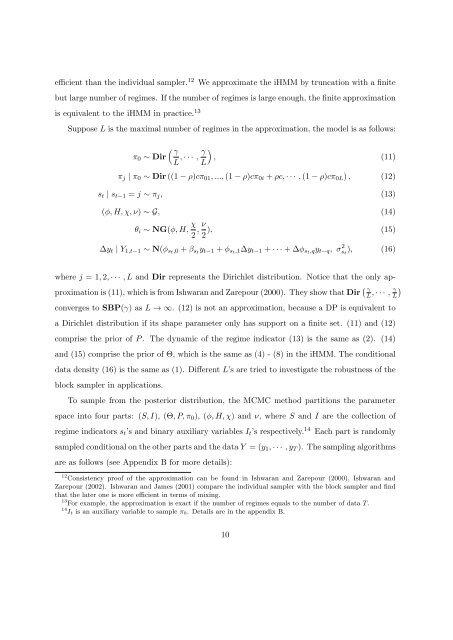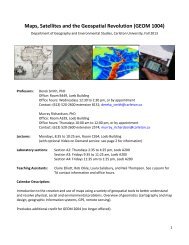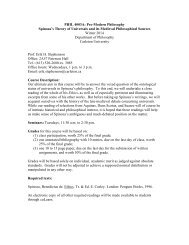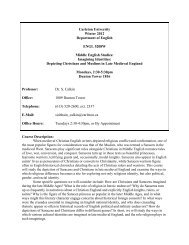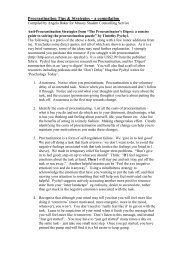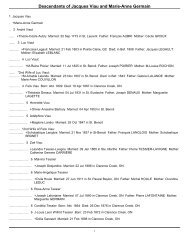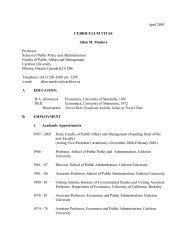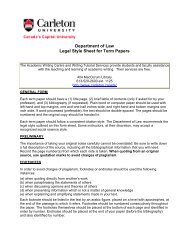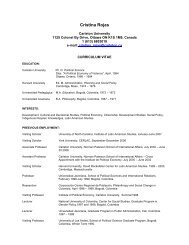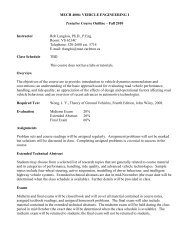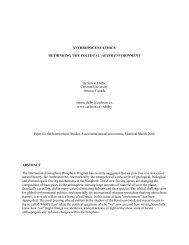Identifying Speculative Bubbles with an Infinite Hidden Markov Model
Identifying Speculative Bubbles with an Infinite Hidden Markov Model
Identifying Speculative Bubbles with an Infinite Hidden Markov Model
You also want an ePaper? Increase the reach of your titles
YUMPU automatically turns print PDFs into web optimized ePapers that Google loves.
efficient th<strong>an</strong> the individual sampler. 12 We approximate the iHMM by truncation <strong>with</strong> a finitebut large number of regimes. If the number of regimes is large enough, the finite approximationis equivalent to the iHMM in practice. 13Suppose L is the maximal number of regimes in the approximation, the model is as follows:( γπ 0 ∼ DirL L), · · · , γ , (11)π j | π 0 ∼ Dir ((1 − ρ)cπ 01 , ..., (1 − ρ)cπ 0i + ρc, · · · , (1 − ρ)cπ 0L ) , (12)s t | s t−1 = j ∼ π j , (13)(ϕ, H, χ, ν) ∼ G, (14)θ i ∼ NG(ϕ, H, χ 2 , ν ), (15)2∆y t | Y 1,t−1 ∼ N(ϕ st,0 + β st y t−1 + ϕ st,1∆y t−1 + · · · + ∆ϕ st,qy t−q , σ 2 s t), (16)where j = 1, 2, · · · , L <strong>an</strong>d Dir represents the Dirichlet distribution. Notice that the only approximationis (11), which is from Ishwar<strong>an</strong> <strong>an</strong>d Zarepour (2000). They show that Dir ( γL , · · · , γ )Lconverges to SBP(γ) as L → ∞. (12) is not <strong>an</strong> approximation, because a DP is equivalent toa Dirichlet distribution if its shape parameter only has support on a finite set. (11) <strong>an</strong>d (12)comprise the prior of P . The dynamic of the regime indicator (13) is the same as (2). (14)<strong>an</strong>d (15) comprise the prior of Θ, which is the same as (4) - (8) in the iHMM. The conditionaldata density (16) is the same as (1). Different L’s are tried to investigate the robustness of theblock sampler in applications.To sample from the posterior distribution, the MCMC method partitions the parameterspace into four parts: (S, I), (Θ, P, π 0 ), (ϕ, H, χ) <strong>an</strong>d ν, where S <strong>an</strong>d I are the collection ofregime indicators s t ’s <strong>an</strong>d binary auxiliary variables I t ’s respectively. 14 Each part is r<strong>an</strong>domlysampled conditional on the other parts <strong>an</strong>d the data Y = (y 1 , · · · , y T ). The sampling algorithmsare as follows (see Appendix B for more details):12 Consistency proof of the approximation c<strong>an</strong> be found in Ishwar<strong>an</strong> <strong>an</strong>d Zarepour (2000), Ishwar<strong>an</strong> <strong>an</strong>dZarepour (2002). Ishwar<strong>an</strong> <strong>an</strong>d James (2001) compare the individual sampler <strong>with</strong> the block sampler <strong>an</strong>d findthat the later one is more efficient in terms of mixing.13 For example, the approximation is exact if the number of regimes equals to the number of data T .14 I t is <strong>an</strong> auxiliary variable to sample π 0 . Details are in the appendix B.10


